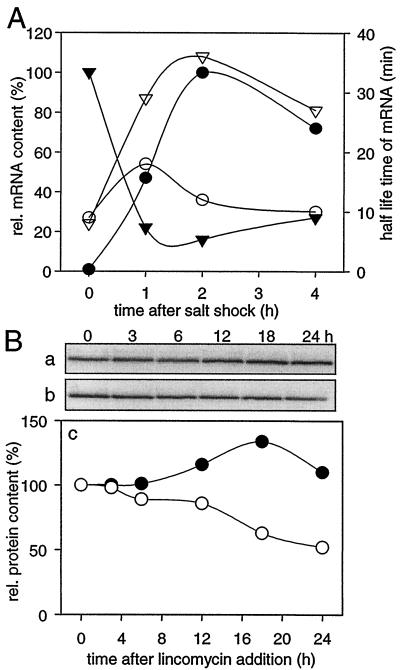FIG. 3.
Influence of salt treatment on the half-lives of mRNA (A) and the GgpS protein (B). (A) Analysis of the levels (solid symbols) and half-lives in the presence of rifampin (open symbols) of the ggpS (circles) and psbC (triangles) mRNA after salt shock consisting of 684 mM NaCl. The mRNA content is expressed in relative units (the maximal steady-state contents were defined as 100%; the signal intensity of the ggpS maximum was about 60% of the signal intensity of the psbC maximum). (B) Estimation of the half-life of the GgpS protein in the presence of lincomycin (added at zero time) in cells grown under control conditions (•) and in cells completely acclimated to 684 mM NaCl (○). Changes in GgpS-specific signals determined by imunoblotting using a specific antibody are shown for lincomycin-treated control cells (a) and salt-acclimated cells (b). Densitometric evaluation of these signals revealed the relative protein content (c) (the level in cells before lincomycin addition was defined as 100%).

